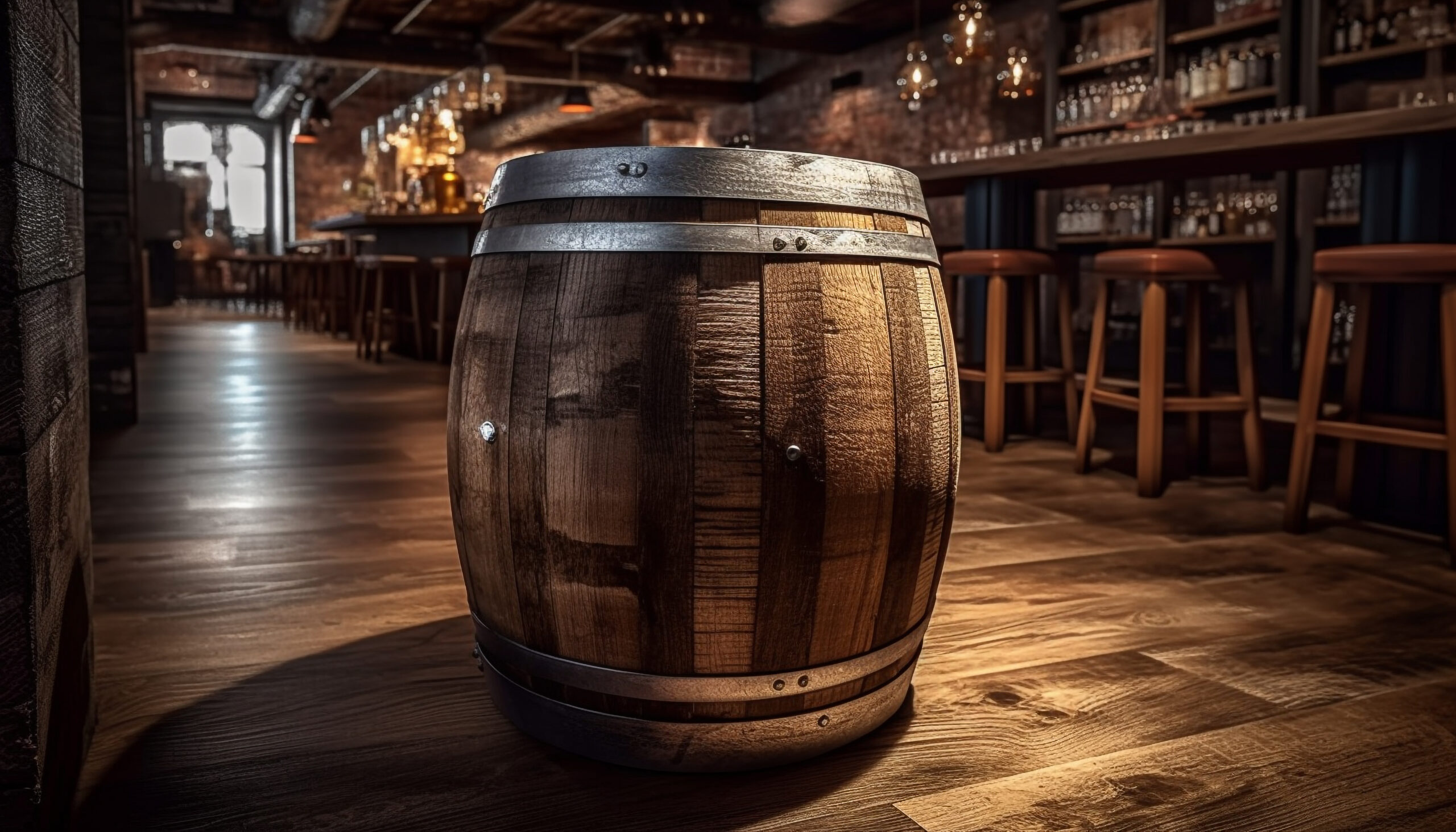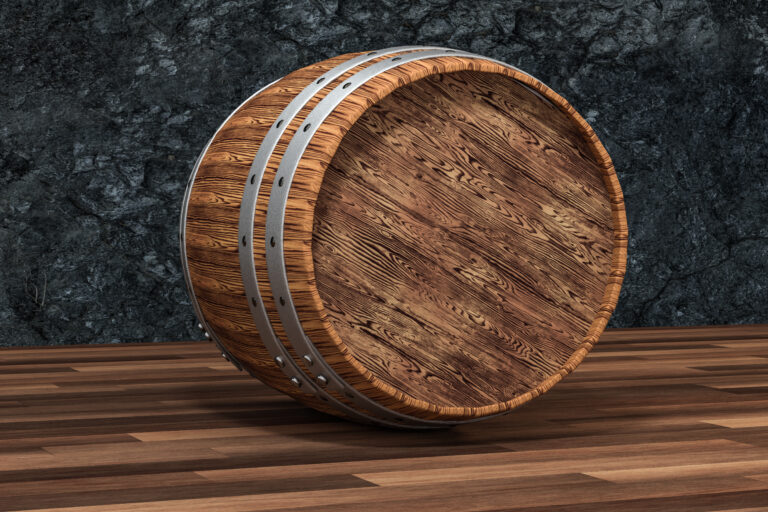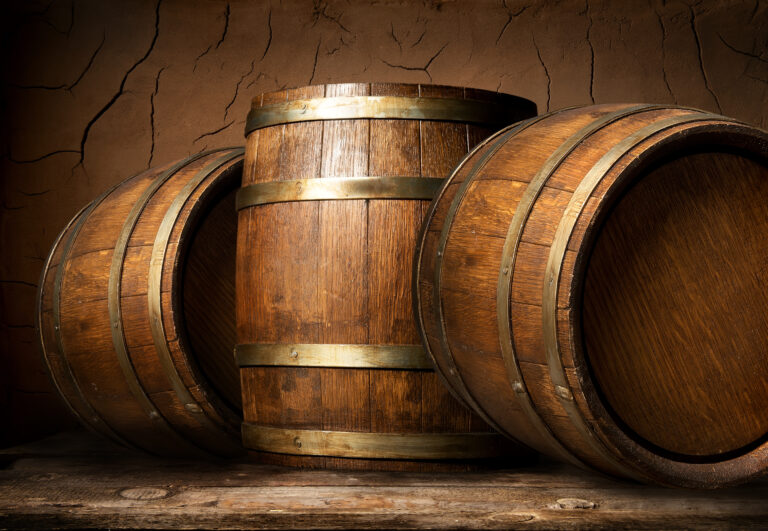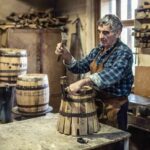You know, whiskey isn’t just a generic drink. Its soul, its very character, is sculpted by the dance of distillation and the slow embrace of aging. And that aging? It’s all down to the barrels, each one a vessel of transformation. The craft of barrel making, or cooperage, is an age-old art, a testament to human ingenuity that echoes across cultures. So, when you cradle that glass and take a sip of your favorite dram, you’re not just tasting liquid; you’re experiencing the legacy of generations of traditional craftsmanship and woodworking mastery.
The barrels themselves are more than mere containers. They breathe life into the whiskey, lending it that rich, golden-brown hue and its signature taste as it matures. Think about it: the type of wood, the intensity of the char levels, the subtle curve of each stave, the way they’re bound together – every detail whispers into the final spirit in your glass. From the rolling green hills of Kentucky, where bourbon sleeps, to the misty hollows of Scotland, home to legendary Scotch, and the serene forests of Japan, where unique Japanese whisky is born, barrel makers have honed distinct techniques, each one a reflection of their local climate, the available wood supply, and their unique cultural heritage.
So, the next time you swirl, nose, and finally savor that first sip of whiskey, spare a thought for the coopers, the unsung heroes who painstakingly crafted the barrel, and the deep tradition that underpins their trade. A wealth of care, history, and cultural pride is poured into the creation of each cask, bestowing upon every batch of whiskey its own inimitable personality. Barrel making isn’t just a job; it’s a true art form, a vital tradition that deserves our respect and preservation.
The History of Barrel Making for Whiskey
The ancient art of barrel making, a cornerstone of cooperage, has been shaping the very essence of whiskey production for centuries. Historically, oak barrels have been the vessel of choice, their porous nature allowing a magical exchange that imbues the spirit with complex flavor and aroma compounds during the aging process.
Since the 15th century, skilled coopers have been handcrafting these oak barrels specifically for whiskey. The process is a dance of heat and pressure, transforming raw wood into gracefully curved staves, bound together with sturdy metal hoops.
In Scotland, the whisky journey often began in barrels fashioned from European oak, such as Quercus robur. This wood generously gifted Scotch whiskies with notes of warm vanilla, vibrant spice, and luscious dried fruit.
Across the Atlantic, in America, American oak, particularly Quercus alba, reigns supreme for bourbon. It’s this wood that contributes those comforting aromas of sweet caramel, creamy coconut, and earthy nuts.
The fiery ritual of charring the inside of the barrel is another crucial step. This process caramelizes the wood’s sugars, unlocking a smoky depth that permeates the spirit. The intensity of the char level directly influences the final flavor profile, with more heavily charred barrels yielding darker, richer whiskies.
While barrel making traditions may subtly shift across different cultures, influenced by available resources and regional preferences, the timeless craft of the cooper remains an indispensable element in the creation of exceptional whiskey.
The Role of the Master Distiller
The master distiller stands as the guardian of the aging process, their experienced hands and discerning palate guiding the spirit towards its peak maturity and ultimate flavor. It’s their expert judgment that dictates the precise moment when the whiskey is ready to be shared with the world through bottling.
They become intimate with the slumbering spirit, periodically drawing samples from the barrels, meticulously analyzing its evolution – how it’s mellowing, how its complexity is unfolding over time. They consider every nuance: the enticing aroma, the deepening color, the satisfying mouthfeel, and the lingering finish.
The distiller must also possess the foresight to determine the ideal time to transfer the whiskey to a fresh barrel for a final flourish of aging, understanding that barrels have a finite lifespan when it comes to imparting their unique character.
When the distiller declares the whiskey has reached its zenith, it’s carefully bottled, ready to be savored. Their pivotal role underscores the artistry involved in crafting a high-quality, flavorful spirit.
The dedication of time, the honed skill, and the unwavering passion poured into the aging of whiskey culminate in a spirit of profound complexity and premium quality. Barrel making and the art of cooperage are enduring traditions that continue to shape the whiskey industry today. Indeed, whiskey owes much of its distinctive allure to the humble oak barrels in which it patiently matures and the dedicated craftspeople who bring those barrels to life.
The Coopers of Scotland and Ireland
For centuries, the Scots and Irish have been masters of whiskey production, each region nurturing its own distinct barrel-making traditions, deeply intertwined with their unique terroirs and spirit.
The Coopers of Scotland
In the rugged landscapes of Scotland, coopers have historically relied on Spanish oak and American white oak to craft their vital vessels. Interestingly, many of these barrels began their journey holding wine and sherry, their previous contents leaving an indelible mark on the Scotch whisky aged within, bestowing distinctive flavor notes from the wines.
Today, the whiskey barrels of Scotland are predominantly fashioned from American white oak and undergo precise charring to unlock a spectrum of flavors in the whiskey. The renowned Speyside region, for instance, is celebrated for its lighter, sweeter whiskies, often matured in barrels with a medium char. In contrast, the intensely peaty single malts of Islay derive their signature smoky embrace from more heavily charred casks.
The cooperages of Scotland are masters of form, producing barrels in a variety of shapes, from the stout designs that maximize wood contact to the taller, slender hogsheads. The specific barrel chosen is a deliberate decision, carefully aligned with the flavor profile the distiller seeks to achieve.
The Coopers of Ireland
Across the Irish Sea, the coopers of Ireland have traditionally favored barrels crafted from native Irish oak to age their distinctive whiskeys. These Irish oak barrels impart a captivating blend of spice, rich cocoa, and succulent dried fruit notes. However, the scarcity of mature Irish oak today, a consequence of historical deforestation, means that most Irish whiskeys now find their maturation in ex-bourbon barrels sourced from America, which contribute comforting hints of vanilla, sweet caramel, and toasted nuts.
Yet, a resurgence is underway. Some forward-thinking distillers in Ireland are actively working to bring back Irish oak barrels, aiming to revive those traditional flavors. The remaining cooperages in Ireland that still work with Irish oak are diligently preserving historic coopering techniques, allowing smaller craft distillers to experiment with diverse barrel shapes and varying char levels. By honoring these time-honored traditions of barrel-making, Ireland’s coopers and distillers are crafting whiskies with a profound sense of place, a true taste of their heritage.
American White Oak Barrels
For centuries, American white oak has stood as the bedrock of whiskey barrel production. Its naturally porous structure allows the whiskey to breathe and interact with the wood, while its unique chemical makeup imbues the spirit with those signature notes of creamy vanilla and sweet caramel.
The American White Oak
White oak that flourishes in the United States, particularly in the rugged Ozark Mountains, is widely regarded as the gold standard for crafting whiskey barrels. This wood strikes a perfect balance: it’s dense enough for structural integrity yet sufficiently porous to facilitate gentle oxidation, a key element in the aging process. Furthermore, it harbors naturally occurring compounds called lactones, which generously impart those sought-after flavors of rich coconut, warm vanilla, and sweet caramel into the whiskey.
Skilled coopers, the artisans of barrel making, meticulously split the oak into individual staves, which are then carefully shaped and assembled into the iconic barrel form. The inside of these barrels undergoes a crucial transformation through charring. The degree of charring acts as a dial, precisely determining the intensity of flavor imparted to the whiskey. A heavier char unlocks deeper, more pronounced flavors. Once constructed and charred, these barrels become the cradles for whiskey, where the spirit will slumber and mature for a minimum of two years, often extending to many more for premium expressions.
During this patient aging period, the whiskey experiences a constant ebb and flow, expanding and contracting with subtle temperature shifts. This dynamic interaction allows the spirit to seep into the very grain of the wood, absorbing both flavor and color compounds. Simultaneously, oxygen gently permeates the wood, a slow, deliberate process that mellows the raw edges of the whiskey. The hallmark of a well-aged whiskey is this harmonious balance – the inherent character of the grain and malt intertwined with the nuanced contributions from the wood.
Bourbon, by legal definition, must undergo its entire aging journey in new, charred oak barrels. This regulation positions bourbon producers as significant consumers of American white oak. While other whiskey styles may utilize reused barrels, bourbon’s distinctive vanilla and caramel flavors are intrinsically linked to this requirement of virgin wood.
So, whether your preference leans towards the subtle elegance of a single malt Scotch or the bold character of bourbon, the unassuming American white oak barrel deserves recognition for bestowing upon whiskey much of its characteristic flavor and captivating aroma. This time-honored tradition, a beautiful marriage of scientific principles and artisanal craftsmanship, is the transformative magic that elevates raw distilled spirits into the complex and cherished final product we know as whiskey.
Japanese Mizunara Oak Barrels
The Japanese whisky industry has garnered global acclaim, in no small part due to its distinctive practice of aging whisky in barrels crafted from Mizunara oak. This unique oak species, native to Japan, imparts a truly singular flavor profile to the maturing spirit.
Mizunara oak barrels come with a significantly higher production cost compared to the oak commonly used in Scotland and the US. The Mizunara trees grow slowly in Japan’s challenging climate, making the wood a rare and precious resource. Furthermore, the porous nature of Mizunara oak facilitates a more intense interaction between the wood and the whisky.
As the whisky matures within these unique vessels, it absorbs distinctive notes of fragrant sandalwood, subtle incense, and sweet coconut. The barrels also lend the whisky a delicate light amber hue. Several esteemed Japanese distilleries, such as Yamazaki and Hakushu, are renowned for their exquisite single malt whiskies that have gracefully aged in Mizunara oak barrels.
Given the premium price and limited availability of Mizunara oak, most Japanese whisky makers also utilize imported barrels fashioned from American or Spanish oak for a portion of their whisky production. These imported barrels typically contribute more traditional oak and vanilla flavors. By skillfully blending whisky aged in both Mizunara oak barrels and imported oak barrels, distilleries can create intricate and nuanced flavor profiles that are uniquely their own.
The cooperage traditions in Japan stretch back many centuries. Initially, barrels made of Mizunara oak served practical purposes, transporting goods and aging shōchū, a traditional Japanese spirit. When whisky distillation was introduced to Japan in the early 1900s, distillers began experimenting with aging whisky in these previously used Mizunara oak barrels. This innovative practice inadvertently led to the distinctive flavor profile that has become a hallmark of Japanese whisky today.
The ancient cooperage traditions of Japan, combined with the nation’s unwavering commitment to craftsmanship, have elevated Mizunara oak barrels to an integral part of Japanese whisky tradition and culture. The exclusive whiskies matured in these exceptional barrels have garnered worldwide acclaim and are highly coveted by whisky connoisseurs seeking a truly unique sensory experience.
Spanish Sherry Casks
For centuries, Spanish sherry casks have played a pivotal role in the aging of exceptional whisky. These are barrels that have previously cradled sherry, a fortified wine hailing from Spain. During their time holding sherry, which typically spans several years, the wood absorbs a rich tapestry of flavors, including notes of luscious dried fruits, earthy nuts, and warm spices. When whisky is subsequently aged in these seasoned casks, it gracefully inherits these complex flavor characteristics.
Types of Sherry Casks
Two primary types of sherry casks are commonly employed in whisky maturation: oloroso and Pedro Ximénez (PX). Oloroso sherry is characterized by its dry and nutty profile, imparting flavors of toasted almonds, rich walnuts, and aromatic spice to the whisky. In contrast, PX sherry is known for its intense sweetness and raisiny notes, bestowing flavors of plump raisins, sweet prunes, and decadent figs.
Popular Whiskies Aged in Sherry Casks
Many of the world’s most revered whiskies owe their distinctive character to aging in sherry casks, including:
- Macallan: This iconic distillery almost exclusively matures its whiskies in sherry casks, resulting in expressions celebrated for their rich dried fruit and nutty nuances.
- Glendronach: Another champion of sherry cask aging, Glendronach utilizes both oloroso and PX casks to create full-bodied whiskies with pronounced sherry-forward flavors.
- Aberlour: This distillery employs a blend of ex-bourbon and sherry casks. Their A’bunadh expression, aged exclusively in oloroso casks, is particularly renowned for its intense fruitiness.
The Aging Process
As whisky rests within sherry casks, the porous nature of the wood allows the residual sherry flavors to gradually permeate the spirit. Over years of interaction, complex chemical reactions occur as compounds break down and recombine, giving rise to new and intriguing flavor molecules. The ultimate result is a whisky that is rich in both aroma and taste, often revealing layers of dried fruit, warm spice, and even hints of dark chocolate.
The practice of using sherry casks to age whisky is a time-honored tradition that consistently yields a delicious and complex spirit. The diverse range of sherry casks available, coupled with nuanced aging techniques, allows for a captivating spectrum of flavors in Spanish-influenced whiskies. It’s no wonder that sherry cask-aged whiskies have not only endured but thrived, standing the test of time as beloved expressions of the distiller’s art.
French Oak and Cognac Barrels
For centuries, French oak barrels have been the traditional choice for aging cognac. The tight grain of French oak is particularly well-suited for the gradual and nuanced imparting of flavor to the brandy as it patiently matures.
Selecting and Seasoning the Wood
The selection of wood for cognac barrels is a meticulous process. Only oak harvested from the Tronçais and Limousin forests in central France is deemed suitable. These trees must have reached an impressive age, between 80 and 150 years old, before they are harvested. The resulting staves then undergo a crucial seasoning period, often lasting several years. This extended air-drying mellows the oak, gently removing harsh tannins and allowing its more desirable aromas to fully develop.
The Cooperage Process
Skilled coopers meticulously assemble the barrels, their craft a blend of precision and tradition. They carefully shape the seasoned staves and seal them together using wooden dowels and sturdy iron hoops. A critical step in the process is toasting the inside of the barrels over an open fire. This controlled heating caramelizes the natural sugars within the wood, contributing to cognac’s distinctive amber hue and the development of warm vanilla and subtle spice flavors. The level of toasting is a deliberate choice, with lighter toasting favoring floral and fruity notes, while heavier toasting unlocks richer, smokier characteristics.
The Aging Cellar
Once crafted, the barrels are filled with young brandy and laid to rest in aging cellars for a minimum of two years. As the brandy matures, it engages in a slow exchange with the wood, gradually extracting color and aroma compounds. Simultaneously, the alcohol content facilitates the expansion and contraction of the wood, further imparting tannins and lignin to the cognac. Environmental factors within the cellar, such as humidity, temperature fluctuations, and airflow, all play a subtle yet significant role in the speed and character of the aging process. Experienced cellar masters regularly sample the maturing brandy, their palates guiding them to determine the precise moment when each batch has reached its peak maturity and optimal flavor.
The Result
When the cellar master deems it ready, the aged brandy is carefully blended and bottled. The oak barrels are responsible for bestowing upon cognac many of its most recognizable characteristics – its warm amber color, its inviting vanilla and subtle spice flavors, and a gentle underlying woodiness. The specific qualities of French oak, combined with the extended aging within the traditional Charentais cellars, are what elevate cognac to its revered status among brandy and other oak-aged spirits. The enduring barrel-making traditions of the coopers and the watchful expertise of the cellar masters have been passed down through generations, consistently producing some of the finest cognacs in the world.
The Toast Matters – Levels of Charring
The level of charring, essentially the controlled burning of the inside surface of whiskey barrels, exerts a profound influence on the flavor of the spirit as it matures. This charred layer acts like a natural filter, gently mellowing the whiskey while simultaneously imparting distinctive smoky notes. Distillers strategically choose from a spectrum of charring levels to achieve their desired flavor profile.
Light Char
A light char, often referred to as a Level 1 char, involves a brief exposure to intense heat, just enough to lightly toast the wood surface while leaving the wood grain clearly visible. This gentle charring contributes subtle smoky undertones and allows a greater expression of the wood’s inherent tannins and lactones in the final flavor. Many bourbon producers favor barrels with a light to medium char.
Medium Char
A medium char, or Level 2 char, results in a more visibly darkened surface with charred fragments, yet the underlying wood grain still remains discernible. This level of charring introduces a more noticeable smoky character while still allowing the nuanced wood flavors to shine through. Scotch producers frequently utilize medium char barrels to strike a harmonious balance between smokiness and the influence of the wood.
Heavy Char
A heavy char, designated as a Level 3 char, subjects the wood to a more intense and prolonged burn, significantly darkening the surface and often obscuring the wood grain. This level of charring imparts robust smoky and roasted notes to the whiskey, although it can somewhat diminish the expression of the more delicate wood flavors. Some distillers intentionally employ heavy char barrels to craft a bold and intensely smoky style of whiskey.
Alligator Char
An alligator char, also known as a Level 4 char, represents the most extreme level of charring. The intense heat causes the wood to deeply crack and fissure, creating a surface that strikingly resembles alligator skin. This aggressive char contributes a powerful smoky flavor that can, in some cases, overwhelm the underlying character of the base spirit. While less common, alligator char barrels are valued by certain distillers seeking an exceptionally smoky and deeply charred whiskey.
Ultimately, the selection of the charring level is a matter of personal taste and the specific style of whiskey the distiller aims to create. By strategically varying the char levels across different barrels, distillers can also achieve a complex tapestry of flavors in their aged whiskies through blending. While the specific traditions of charring barrels may exhibit subtle variations across different cultures, the undeniable impact on the final flavor profile remains a universal principle in the world of whiskey.
Unique Local Cooperages Around the World
The cooperage tradition, deeply rooted in history, showcases a remarkable diversity across the globe, shaped by the unique interplay of local resources and cultural practices. Some of the most distinctive cooperages worldwide craft whiskey barrels that are truly unlike any other.
Spain
In Spain, the legacy of sherry production has given rise to a strong tradition of crafting sherry casks from Spanish oak. This wood is prized for the distinctive flavors of almond, walnut, and warm spice it imparts to whiskey. Sherry casks are known for allowing good respiration while simultaneously contributing a unique layer of complexity to the maturing spirit.
France
French Limousin oak holds a special place in the world of whiskey aging, renowned for the delicate vanilla and sweet caramel notes it bestows. Small, independent French cooperages, often employing time-honored traditional methods, produce barrels highly sought after by discerning distilleries. The tight grain of this wood allows for a subtle yet significant influence on the spirit.
Japan
Japan stands apart with its use of Mizunara oak barrels. This indigenous wood, with its porous nature, fosters a profound interaction with the whiskey, imparting exotic flavors of creamy coconut, fragrant sandalwood, and delicate incense. These unique barrels are often crafted using traditional Japanese tools and techniques, sometimes even employing bamboo hoops instead of metal.
Scotland
Scotland’s whiskey barrel making tradition stretches back through the centuries. For generations, coopers have skillfully crafted barrels from both Spanish oak and American oak. More recently, some innovative distillers have begun exploring the potential of native Scottish oak, which can contribute intriguing notes of warm clove, spicy cinnamon, and earthy black pepper. In Scotland, barrel making is deeply regarded as an art form, with invaluable skills and knowledge passed down meticulously from one generation of coopers to the next.
India
In India, the tropical climate presents unique challenges for barrel aging, often necessitating frequent repairs or “re-casking.” While teak wood was once a popular choice, imparting a distinctive orangey and spicy character, oak, particularly French oak, has become more prevalent. However, some adventurous distillers are now exploring the potential of native Indian oak varieties, such as Haldu, in the quest for unique and fragrant flavor profiles.
The sheer variety of woods and the diverse craftsmanship found in cooperages around the world mean that whiskey can express as many nuanced flavors as there are cultures shaping its creation. Exploring the different traditions of barrel making is an invitation to discover truly unique drams from every corner of the globe, a testament to the enduring art of the cooper.
The Future of Barrel Traditions for Whiskey
The horizon for barrel traditions in the world of whiskey gleams with promise. Distillers across the globe are embracing experimentation, venturing into the realm of different woods and nuanced char levels to unlock entirely new and captivating flavor profiles in their spirits.
New Oak Varieties
Beyond the familiar French oak and American oak, coopers and distillers are increasingly exploring the potential of other oak species for whiskey aging. Hungarian oak and the distinctive Japanese Mizunara oak are gaining recognition for the unique aromas and tastes they can impart to the maturing spirit.
Re-using Barrels
The practice of re-using barrels that previously held other alcoholic beverages, such as wine, rum, or even other styles of whiskey, is gaining traction. The residual flavors from the previous spirit can interact in fascinating ways with the aging whiskey, adding layers of complexity and intrigue. Moreover, re-using barrels aligns with increasingly important eco-friendly practices within the industry.
Heavily Charred Barrels
The intense charring of the inside of barrels before they are filled with whiskey is a technique known for producing pronounced smoky flavors. Some distillers are pushing the boundaries, experimenting with heavily charred barrels to create bold and robust taste experiences. However, achieving the right balance is crucial, as excessive char can sometimes overshadow the natural oak and spirit characteristics.
Barrel Finishing
A technique known as barrel finishing involves transferring whiskey that has undergone its initial aging in traditional oak barrels to different types of casks for a final period of maturation. Port, sherry, and various wine casks are popular choices for finishing whiskies, imparting sweet and fruity notes. Even rum and tequila casks are being explored to add an extra layer of flavor complexity.
Blending Barrel Influences
Master distillers are increasingly showcasing their artistry by skillfully blending whiskies that have been aged in a diverse array of barrels. By carefully combining spirits matured in different oak varieties, with varying char levels, and with different previous spirit histories, they can construct layered and remarkably complex flavor profiles, crafting truly unique whiskies tailored to specific palates.
The future of barrels in the whiskey world is vibrant with possibilities. While the respect for tradition remains strong, the spirit of innovation in barrel making and aging processes promises to deliver exciting new flavors and drinking experiences for whiskey lovers around the globe. The future of this ancient spirit is undoubtedly in good hands.
Final Thoughts
So, there you have it – the intricate and fascinating story behind how whiskey barrels are crafted in different corners of the world. As you’ve discovered, while the specific materials and techniques may vary from region to region, the fundamental goal remains the same: to produce high-quality barrels that will impart distinctive aromas and nuanced flavors to the patiently aging spirit. The dedicated coopers who painstakingly create these essential vessels, often drawing upon skills and knowledge passed down through generations, play an indispensable role in bringing forth some of the finest and most highly prized whiskies. The next time you savor a sip of an aged single malt or a robust bourbon, take a moment to raise your glass not only to the distillers but also to the often-unsung craftsmen who helped make that experience possible. Their time-honored traditions are a vital part of the whiskey story and are truly worth celebrating and preserving.







